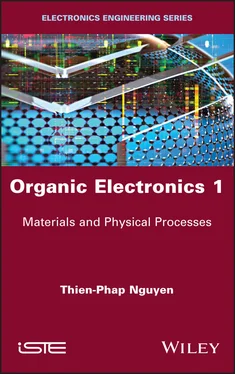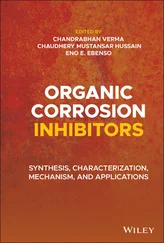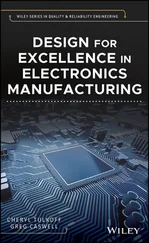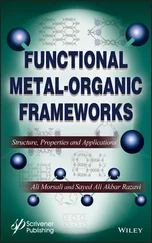5 Chapter 5Figure 5.1. Schematic representation of an N-type semiconductor/metal contact ac...Figure 5.2. Diagram of the energy bands of the metal/SC contact with alignment o...Figure 5.3. Formation of the interface dipole layer: a) metal with a low work fu...Figure 5.4. Schematic representation of the ICT model with the transition from t...Figure 5.5. Energy levels: a) in the metal; b) at the metal/SC interface Figure 5.6. Example of the structure of an organic solar cell: a) normal; b) inv...Figure 5.7. a) Structure of a self-assembled monolayer; b) example of the use of...
1 Chapter 2Table 2.1. Comparison of the properties of organic and inorganic SCs
2 Chapter 4Table 4.1. Metal work function and potential barrier for an MEHPPV/metal contact
1 Cover
2 Table of Contents
3 Title Page Series Editor Robert Baptist
4 Copyright First published 2021 in Great Britain and the United States by ISTE Ltd and John Wiley & Sons, Inc. Apart from any fair dealing for the purposes of research or private study, or criticism or review, as permitted under the Copyright, Designs and Patents Act 1988, this publication may only be reproduced, stored or transmitted, in any form or by any means, with the prior permission in writing of the publishers, or in the case of reprographic reproduction in accordance with the terms and licenses issued by the CLA. Enquiries concerning reproduction outside these terms should be sent to the publishers at the undermentioned address: ISTE Ltd 27-37 St George’s Road London SW19 4EU UK www.iste.co.uk John Wiley & Sons, Inc. 111 River Street Hoboken, NJ 07030 USA www.wiley.com © ISTE Ltd 2021 The rights of Thien-Phap Nguyen to be identified as the author of this work have been asserted by him in accordance with the Copyright, Designs and Patents Act 1988. Library of Congress Control Number: 2020948483 British Library Cataloguing-in-Publication Data A CIP record for this book is available from the British Library ISBN 978-1-78630-321-9
5 Introduction
6 Begin Reading
7 List of Acronyms
8 References
9 Index
10 End User License Agreement
1 v
2 iii
3 iv
4 ix
5 x
6 xi
7 1
8 2
9 3
10 4
11 5
12 6
13 7
14 8
15 9
16 10
17 11
18 12
19 13
20 14
21 15
22 16
23 17
24 18
25 19
26 20
27 21
28 22
29 23
30 24
31 25
32 26
33 27
34 28
35 29
36 30
37 31
38 32
39 33
40 34
41 35
42 36
43 37
44 38
45 39
46 41
47 42
48 43
49 44
50 45
51 46
52 47
53 48
54 49
55 50
56 51
57 52
58 53
59 54
60 55
61 56
62 57
63 58
64 59
65 60
66 61
67 62
68 63
69 64
70 65
71 66
72 67
73 68
74 69
75 70
76 71
77 72
78 73
79 74
80 75
81 76
82 77
83 78
84 79
85 80
86 81
87 82
88 83
89 84
90 85
91 86
92 87
93 88
94 89
95 90
96 91
97 92
98 93
99 94
100 95
101 96
102 97
103 98
104 99
105 100
106 101
107 102
108 103
109 104
110 105
111 106
112 107
113 108
114 109
115 110
116 111
117 112
118 113
119 115
120 116
121 117
122 118
123 119
124 120
125 121
126 122
127 123
128 124
129 125
130 126
131 127
132 128
133 129
134 130
135 131
136 132
137 133
138 134
139 135
140 136
141 137
142 138
143 139
144 140
145 141
146 142
147 143
148 144
149 145
150 146
151 147
152 148
153 149
154 150
155 151
156 152
157 153
158 155
159 156
160 157
161 158
162 159
163 160
164 161
165 162
166 163
167 164
168 165
169 166
170 167
171 168
172 169
173 170
174 171
175 172
176 173
177 174
178 175
179 176
180 177
181 178
182 179
183 180
184 181
185 182
186 183
187 184
188 185
189 186
190 187
191 188
192 189
193 191
194 192
195 193
196 194
197 195
198 196
199 197
Series Editor
Robert Baptist
Organic Electronics 1
Materials and Physical Processes
Thien-Phap Nguyen

First published 2021 in Great Britain and the United States by ISTE Ltd and John Wiley & Sons, Inc.
Apart from any fair dealing for the purposes of research or private study, or criticism or review, as permitted under the Copyright, Designs and Patents Act 1988, this publication may only be reproduced, stored or transmitted, in any form or by any means, with the prior permission in writing of the publishers, or in the case of reprographic reproduction in accordance with the terms and licenses issued by the CLA. Enquiries concerning reproduction outside these terms should be sent to the publishers at the undermentioned address:
ISTE Ltd
27-37 St George’s Road
London SW19 4EU
UK
www.iste.co.uk
John Wiley & Sons, Inc.
111 River Street
Hoboken, NJ 07030
USA
www.wiley.com
© ISTE Ltd 2021
The rights of Thien-Phap Nguyen to be identified as the author of this work have been asserted by him in accordance with the Copyright, Designs and Patents Act 1988.
Library of Congress Control Number: 2020948483
British Library Cataloguing-in-Publication Data
A CIP record for this book is available from the British Library
ISBN 978-1-78630-321-9
Organic electronics can be defined as a branch of general electronics that focuses on studying the properties and applications of organic semiconductors. These materials, referred to in common usage as plastics, are, in fact, a distinct class separate from that of ordinary plastic materials. They may be small molecules, or conjugated polymers, which have an electronic structure comparable to that of conventional semiconductors. Therefore, their physical properties are very similar to the properties of these latter materials. However, organic materials are generally amorphous and their electrical conductivity is much lower than that of traditional semiconductors. As a result, they have been neglected for a long time despite the discovery of some of their notable physical properties, such as the discovery of electroluminescence in anthracene in the 1960s.
In all scientific or technological disciplines, an idea, concept or creation can arise with a change or progression and profoundly alter the course of the evolution of the discipline – and sometimes even the course of the history of science. Such was the case in 1947 when the researchers John Bardeen, William Shockley and Walter Brattain invented the transistor, a device that would revolutionize traditional electronics. This invention is what first allowed for the design of circuits that provided logical functions, then for these circuits to be integrated into complex systems capable of handling sophisticated tasks, and finally for these miniaturized systems to be incorporated into the portable electronic devices that we now use every day. A similar progression occurred in organic electronics in 1987, when Tang and Van Slyke used the evaporation of small molecules in a vacuum to create diodes that emitted light in the form of a thin film that operated with a turn-on voltage lower than 10 V. Their work demonstrated that, in practice, organic devices are suitable for optoelectronic applications in the same way as their inorganic counterparts. A few years later, Burroughs et al . (1994) demonstrated that by using conjugated polymers deposited as thin films from a solution, they could also produce light-emitting diodes with a low operating voltage. This work paved the way for film depositing techniques using solutions and led to the production of devices through printing developed later in laboratories. For this domain, we will use the descriptors “flexible” or “printed” to indicate the discipline of organic electronics. Advances in research have been very rapid and have shown remarkable results, not only in the understanding of physical processes in materials and components but also for the creation of new electronic devices now available on the market. Today, organic electronics has become its own field, one that will prove to be important technologically and economically in the near future.
Читать дальше













